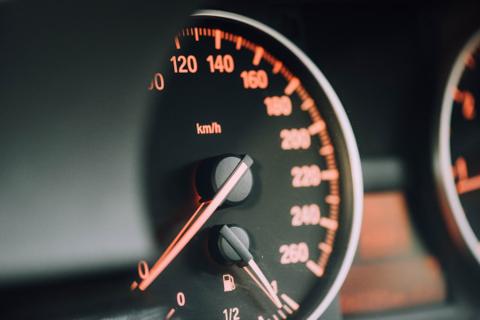Caliper Testing
Why do our calipers reduce braking distances?
The question we answer most is 'I can lock the wheels with the standard brakes, so how can better calipes improve the overall braking performance?' The answer comes in the way you are able to apply the braking force. Our four-piston, aluminium brake calipers help in a number of ways:
- They apply the braking force more evenly across the pad making better use of the friction against the disc
- The multiple piston design allows for more pressure on the pad for less pressure on the pedal allowing you to maximise the braking effort before the wheels lock, especially if you cadence brake.
- Lower brake caliper and fluid temperatures help massively reduce brake fade, that is, you can brake from high speed numerous times before the brakes become less effective.
- By being able to brake harder, without locking the wheels you retain more control and reduce the stopping distance. Remember a locked wheel is skidding over the tarmac not helping you reduce the momentum of the vehicle.
Testing braking distances consistantly in the real world is a dark art, even for modern manufacturers. There are so many variables that it is almost impossible to recreate the exact conditions, with the following factors all making a significant difference: Temperature, humidity, surface grip, tyre type and condition are obvious, but the biggest variable is the driver! Their over all capability, reaction time and consistancy play the biggest part in the testing results.
All our calipers have been tested in the factory, on the road and on the track for overall performance, fade and temperature. The combined figures have helped us make the conservative claims both on this website and throughout our marketing litrature.
The biggest point to note is that the figures are based on the cars original braking performance. Some of our caliper kits offer huge performance benifits in terms of percentage, because they are replacing relitively poor OEM brakes with modern 4-pot calipers. Others less so because as the cars developed the brakes got better. A perfect example of this is a Jaguar E-Type.
Track & road testing

Jaguar E-Type Case study
Under test conditions at Millbrook Proving Ground we consistantly achieved the following:
Series 1 E-Type - Dunlop single piston calipers
- Improved stopping distance of 12 meters from 60 MPH
- In constant stops from 60 MPH a dramatic reduction in brake fade
- A reduction in caliper and fluid temperature of 45%
Series 2 & 3 E-Type - Girling 3 piston calipers
- Improved stopping distance of 6 meters from 60 MPH
- In constant stops from 60 MPH a smaller, but still significant reduction in brake fade
- A reduction in caliper and fluid temperature of 35%
Although the reduction in braking difference is not as great for the Series 2 & 3 cars, the feedback from clients has been just as amazing as those with Series 1 cars and is actually our best sellling kit.
General test results
As an average across the range, under test conditions, we have been able to repeatably reduce the braking distance of a number of British sports and saloon cars by 7 meters from 60 MPH.
In otherwords if you hit the object at 7 meters to go before you actually stopped, you would still be travelling at 25 MPH which is more than enough to do a lot of damage to any classic car and their occupants.
This includes: Austin Healey, later Jaguar, Triumph, MG's, Fords and Morgan. All of these cars came standard with either 2 or 3 piston calipers.
